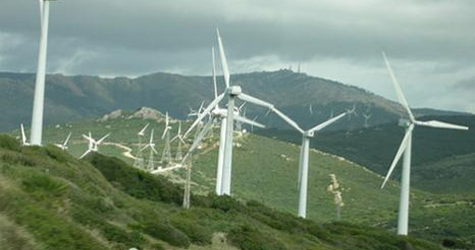For the first time in history, wind has been the primary source of electricity in Spain in a whole year.
Madrid, January 15, 2014. In fact, Spain is the first country in the world where wind is ranked as the technology that contributes most to the power demand coverage for an entire year. According to the 2013 advance report of the system operator Red Eléctrica de España (REE), the power demand coverage using wind was 20.9%, compared with 20.8% coming from nuclear.
Sponsors
Sponsors
Wind power production during 2013 has been 54,478 GWh, representing a 13.2% increase over 2012. According to calculations by the Spanish Wind Energy Association (AEE), this generation is enough to supply 15.5 million households, a 90% of the total. Nuclear produced 2,337 GWh more than wind last year, but its contribution to the power demand coverage was lower because it consumes more electricity than wind to run its facilities, and this is deducted when calculating power demand coverage.
Wind power beat other maximum levels in 2013. On February 6th, it scored a new record of instantaneous power, with 17,056 MW at 3,49pm. That very same day, between 3pm and 4pm, it also exceeded the previous historic highs for hourly power, with 16,918 MWh.
During January, February, March and November, wind energy technology was the greatest contributor to total energy production of the system. Those months proved true that when the wind blows, Spaniards save money. The influence of wind on wholesale market prices is very clear if we consider the market on the more and less windy days. In 2013, the day in which the maximum coverage of daily demand with wind was reached, February 2nd, the market dropped to a 7.69 euros/MWh low. The minimum coverage took place on December 8, a day in which the market price climbed up to 93.11 euros/MWh.
Early December, the wind barely blew due to the high pressure over Spain, and this was one reason for the sharp rise in the electricity market prices, which reached 112 euros/MWh high. However, due to the strong winds that brought the explosive cyclogenesis of Christmas Eve and Christmas Day, the market price dropped to 9.18 and 5.42 euros/MWh, respectively. These wind energy records happened while installed power hardly increased.
2013 could go down in history as a great year for the Spanish wind sector. But it is not the case. The wind power companies ended the year still without knowing the economic impact of the Government’s energy reform. If it goes ahead as proposed, it will have an unfair and disproportionate effect on the wind sector. Companies start 2014 mired in legal uncertainty – retroactivity of legislation set up by the energy reform means that the facilities in place are not going to have the expected income when the investments were made, and without expectation about the future, it is going to be difficult to encourage investors to invest in wind power in this country.
Wind energy was regulated for the first time in Spain Special Regime Law 54/1997 Electrical Sector, which has been replaced by Law 24/2013 in the context of the Energy Reform. During these 16 years, imports of fossil fuels to generate electricity, as well as emissions of pollutants and CO2 to the atmosphere, have been reduced by over 20%. The Government should take this into account before closing the energy reform.
Source: www.aeeolica.org










